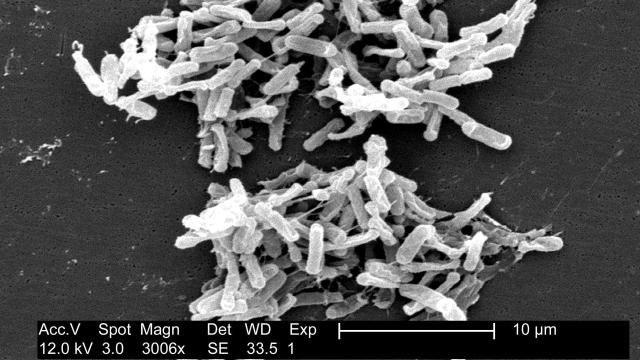Stool transplants are exactly what they sound like: moving poop from a healthy person into a sick person, perhaps via a pill or an enema. I bring this up because most people cringe at the idea – but they’re a treatment proven effective for some antibiotic-resistant infections caused by the Clostridium difficile, or C. diff bacteria, which kill tens of thousands of people per year. A common sweetener may be worsening these C. diff infections.
Two distantly related epidemic strains of C. diff, called RT027 and RT078, have emerged in the past 20 years. Both have evolved enhanced ability to infect and damage us, but scientists don’t know why. Now, a team of researchers think that the introduction of a now common sugar additive into our diets, called trehalose, may be responsible for the increased virulence.
“On the basis of [our] observations, we propose that the widespread adoption and use of the disaccharide trehalose in the human diet has played a significant role in the emergence of these epidemic and hypervirulent strains,” the authors write in a paper published yesterday in the journal Nature.
Trehalose is a sugar that has been considered useful by the food industry thanks to its ability to withstand acids and high heat. It was pretty expensive before 2000, but a new method made it much easier to produce from starch. It was given a “generally recognised as safe” status by the US Food and Drug Administration in 2000, according to the paper. It is now widely used in countries around the world, in foods like pasta, ice cream, and even ground beef.
Both C. diff strains were already around, but increasingly severe cases have been reported since 2000, according to one paper. So the team of researchers from the US, the Netherlands and the UK exposed the strains to trehalose, sequenced them, and even infected mice with one of them.
Not only did the trehalose cause these two strains to grow faster than in other strains, but feeding trehalose to mice with the RT027 strain (whose gut bacteria makeup had been altered to look like a that of a human) killed them faster than the mice who didn’t eat trehalose. “Combined, these results show that metabolism of dietary trehalose can contribute to disease severity of RT027 C. difficile strains,” the authors write.
It turns out that the two strains use trehalose in different ways. RT027 has a modified protein that allows it to digest even tiny amounts of trehalose. The RT078 instead has an additional four genes that allow it to better metabolize trehalose.
Obviously this is just a mouse study and tests done in a lab – humans are not the same as mice and the real world is not a lab. Jimmy Ballard from the University of Oklahoma points out that there are “several avenues for further research” in a Nature commentary. C. diff infection occurs in the human colon, but the body might break down trehalose before it reaches the colon. He noted that the authors of this paper tested fluid from the small intestine.
The authors do put forth further evidence that trehalose has something to do with the increasing severity of C. diff infections, mainly surrounding the timing and adoption of trehalose in the human diet compared to C. diff spreading and worsening. And Ballard still found the results compelling. He writes: “the circumstantial and experimental evidence points to trehalose as an unexpected culprit.”
